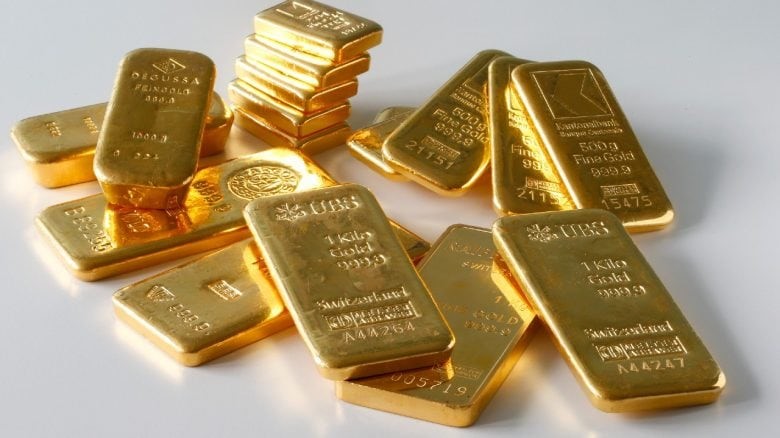Many different strategies exist for investing in gold. This precious metal can be purchased in the form of bullion, jewelry, or coins; it can be invested in through the purchase of shares in a gold mining business or another gold-related venture; and it can be used as a currency. There are advantages and disadvantages to every approach. That might make it challenging for beginner investors to figure out the best strategy to obtain exposure to this metal.
By following the advice in this manual, you will soon be making profitable investments in the gold market. In this article, we will cover the benefits and drawbacks of each investment strategy so that you may make an informed decision about your investment strategy.
Here is what you need to know:
Gold jewelry

Investing in gold through the purchase of jewelry is a roundabout way to do it. Because of the markup involved in fabricating jewelry out of precious metal and selling it on the retail market, jewelry is typically seen as more valuable to the wearer than as an investment.
Even if costly, it does not depreciate, its worth as a collector’s item may be higher than its actual gold content. Investment jewelry has the additional disadvantage of having to be insured and securely stored. Furthermore, you will not be able to quickly recoup your investment if you decide to sell it.
Gold bullion

Gold bullion is gold that has been refined to a purity of 99.5% to 99.9% and cast into ingots or bars, often of a rectangular shape. It is common practice for central banks to retain bullion in secure vaults as a reserve asset. Buying it provides investors with instantaneous price exposure to the precious metal. Unfortunately, the price tag is somewhat high.
In early 2022, its price was around $2,000 per ounce, making a bar unaffordable; an ingot, based on its size, would also cost a significant amount. An investor would have to pay for the metal itself, as well as for safekeeping and protection against loss. Similarly, it is not a liquid asset. Check out this link https://investingingold.com/goldco-review/ to discover more!
Gold coins

Coins made of gold have been used as money for centuries. They still have significance to investors as a valuable asset despite the fact that they are not legal money. Their value may be diminished by the time and money spent acquiring, storing, and insuring them. However, you’ll have to find a collector or even other buyer who is interested in purchasing the coins before you can turn a profit.
Gold stocks
Companies involved in gold prospecting and mining are included among the stocks available to investors. Gold streaming firms and royalty companies are also included.
The greatest potential for profit is in gold mining stocks. Miners can exceed its price by investing in production expansion (e.g., by developing new mines, expanding existing ones, or acquiring another miner). They may also distribute dividends, giving shareholders a chance to profit from rising prices. The stocks are very liquid because investors can readily purchase and sell them in a trading account.
Nevertheless, the gold mining industry is not without its hazards. The stock price of a mining company may lag behind its price due to factors such as cost overruns, poor management, or too much debt. Many also mine for other resources, including copper and other metals. While diversification lessens exposure, it may lessen the effect of a spike in its prices.
In the meantime, gold streaming, as well as royalty firms, are able to help miners by providing the funding they need for mine expansion and development. The risk they take on is lower than that of investing in mining stocks since they either acquire the right to buy at a certain price (streamers) or a percentage of the earnings (royalties). Read more on this page.
Gold certificates
Gold certificates are company-issued notes that represent legal title to a specified quantity of gold. These certificates, once issued by the United States government as a currency counterpart, are currently issued by some investment firms and banks businesses, giving the holder ownership of a fraction of the issuer’s gold reserves. Investors can gain direct exposure to fluctuations in the price through the purchase of these certificates, but its security depends on the issuer company. The certificate may become useless if the corporation goes bankrupt.
Mutual funds and exchange-traded funds
Different gold ETFs take on varying degrees of risk based on whether they invest in physical gold or in the stocks of mining businesses. Its price exposure can be gained directly through the purchase of real gold bars through an exchange traded fund.
For the most part, they track with its price fairly closely. Nevertheless, exchange-traded funds have a fee attached to them called the ETF expense ratio. Exchange-traded funds are typically the simplest option to invest in gold, but their higher expense ratio may make them worthwhile for some investors. Moreover, they have a very high liquid content.
Shares of many miners are often held by gold-focused ETFs and mutual funds. The diversity gives the investor broad exposure to the mining segment, which helps minimize risk. Despite their allure, mining exchange traded funds and mutual funds have historically underperformed the price of gold.
Gold futures and options
The buyer of a gold futures contract is guaranteed the right to purchase the specified quantity at the specified future purchase price. Gold exchange-traded funds (ETFs) and mining stocks can be bought and sold at predetermined prices and on predetermined dates via options contracts. These contracts allow investors to gain exposure to this precious metal without actually purchasing the metal.
Leverage is a problem with gold futures. Buyers do not need to put the entire sum down at buying. Using leverage can magnify profits, but it can also magnify losses if the holder does not have sufficient cash on hand to cover the transaction. Due to a lack of funds, investors may be forced to sell at a loss rather than buy and hold for a possible upswing.






